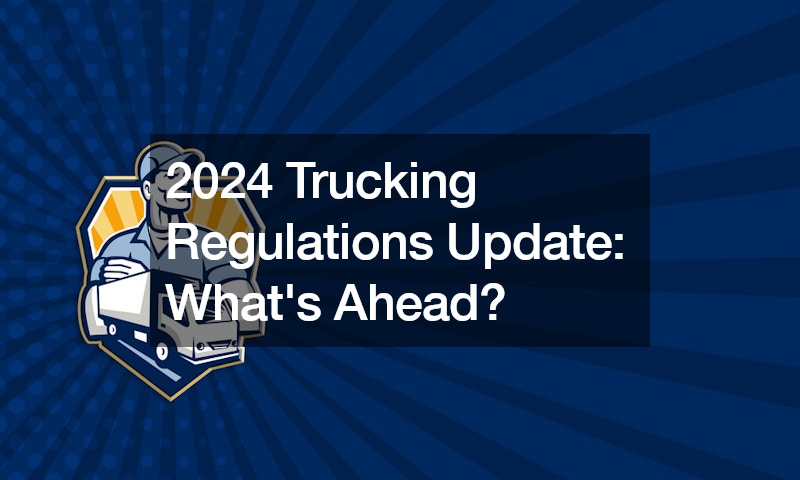
The trucking industry is gearing up for several anticipated regulatory changes that could significantly impact operations across the United States. From new drug testing methodologies to potential advancements in vehicle safety technology, here’s a comprehensive look at what trucking companies and drivers can expect in the coming months.
1. Oral Fluid Testing
One of the most notable changes expected in 2024 is the introduction of oral fluid testing as an approved method for DOT drug testing. Traditionally, urine analysis has been the standard, but the Department of Transportation (DOT) has finalized rules to allow for oral fluids as an alternative.
This move aims to combat potential cheating on drug tests and provide a less invasive option for ensuring driver safety. However, the implementation hinges on the certification of laboratories capable of conducting these tests, which is expected to occur in early to mid-2024.
2. Speed Limiters
Another contentious topic on the regulatory agenda is the potential mandate for speed limiters on commercial vehicles. The Federal Motor Carrier Safety Administration (FMCSA) has been exploring this issue, which has sparked debate within the industry and among lawmakers. The proposal would involve setting speed limits on trucks, a measure proponents argue would enhance road safety but which critics claim could pose logistical challenges and affect operational efficiency. The outcome of ongoing discussions and potential rulemaking in 2024 remains uncertain but highly anticipated.
3. Automatic Emergency Braking Systems
Safety technology in commercial vehicles may see a significant upgrade with the possible mandate for Automatic Emergency Braking (AEB) systems. Proposed jointly by the FMCSA and the National Highway Traffic Safety Administration (NHTSA), this rule would require all newly manufactured heavy trucks and buses to be equipped with AEB technology. The system aims to mitigate collisions by automatically applying brakes when potential hazards are detected, operating effectively across varying speeds. While the comment period for this proposal has closed, the industry awaits the final rule, expected to be announced in 2024.
4. Crash Preventability Determination
The FMCSA plans to expand its Crash Preventability Determination Program, which evaluates whether certain crashes were preventable by the driver or not. Originally piloted with a limited scope, the program is set to include additional accident types, allowing carriers to challenge crash reports that unfairly impact their safety records. This expansion, scheduled for implementation in 2024, aims to provide more accurate assessments of carrier safety performance and reduce penalties for incidents beyond drivers’ control.
5. CSA Scores and Safety Ratings
Significant changes are also on the horizon for the Compliance, Safety, Accountability (CSA) program, which assigns safety scores to carriers based on various criteria. Proposed revisions seek to update the methodology for calculating CSA scores, potentially altering how carriers are evaluated for safety compliance. Furthermore, discussions are underway to revise safety fitness determinations, transitioning from a three-tier rating system to a more nuanced approach tied closely to CSA scores. These changes, expected to roll out in 2024, aim to improve the accuracy and relevance of safety assessments within the industry.
6. Independent Appeals Board for Data Reviews
Addressing concerns over transparency and consistency in data review processes, the FMCSA plans to establish an independent appeals board. This board would handle requests for data review reconsiderations, offering carriers and drivers a fair mechanism to challenge and correct erroneous safety data. By introducing standardized procedures and ensuring impartiality in decision-making, this initiative aims to enhance the integrity of safety ratings and promote accountability across the board. Truck labor lawyers may find this development particularly significant as it provides a formal avenue to address regulatory issues affecting their clients.
Navigating the Regulatory Landscape
As these regulatory updates unfold throughout 2024, trucking companies and drivers must stay informed and prepared to adapt. This involves keeping up-to-date with changes that promise enhanced safety measures and fairer evaluations, as well as anticipating challenges related to implementation and operational adjustments. Proactively engaging with industry associations, closely monitoring official announcements, and actively participating in public comment periods are crucial steps for stakeholders to influence regulatory outcomes and ensure compliance with evolving standards. These efforts are vital for navigating the complex regulatory environment and maintaining operational efficiency in the trucking industry.
The Bottom Line
The year 2024 promises to be a pivotal year for trucking regulations, marked by potential advancements in drug testing, vehicle safety technology, and safety rating methodologies. By proactively staying abreast of these developments and actively participating in the regulatory process, the industry can navigate these changes effectively while maintaining a commitment to safety, efficiency, and compliance.
.

